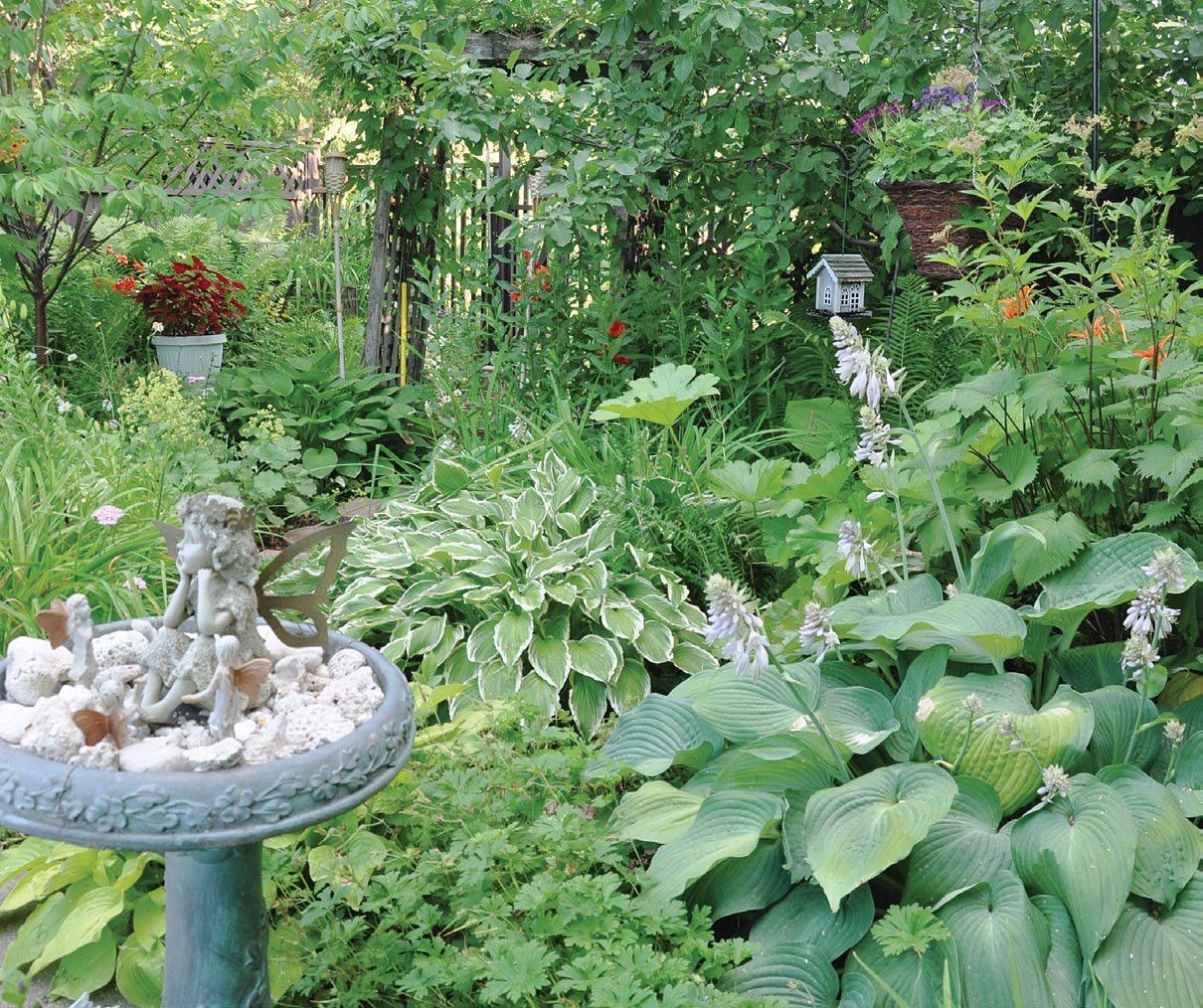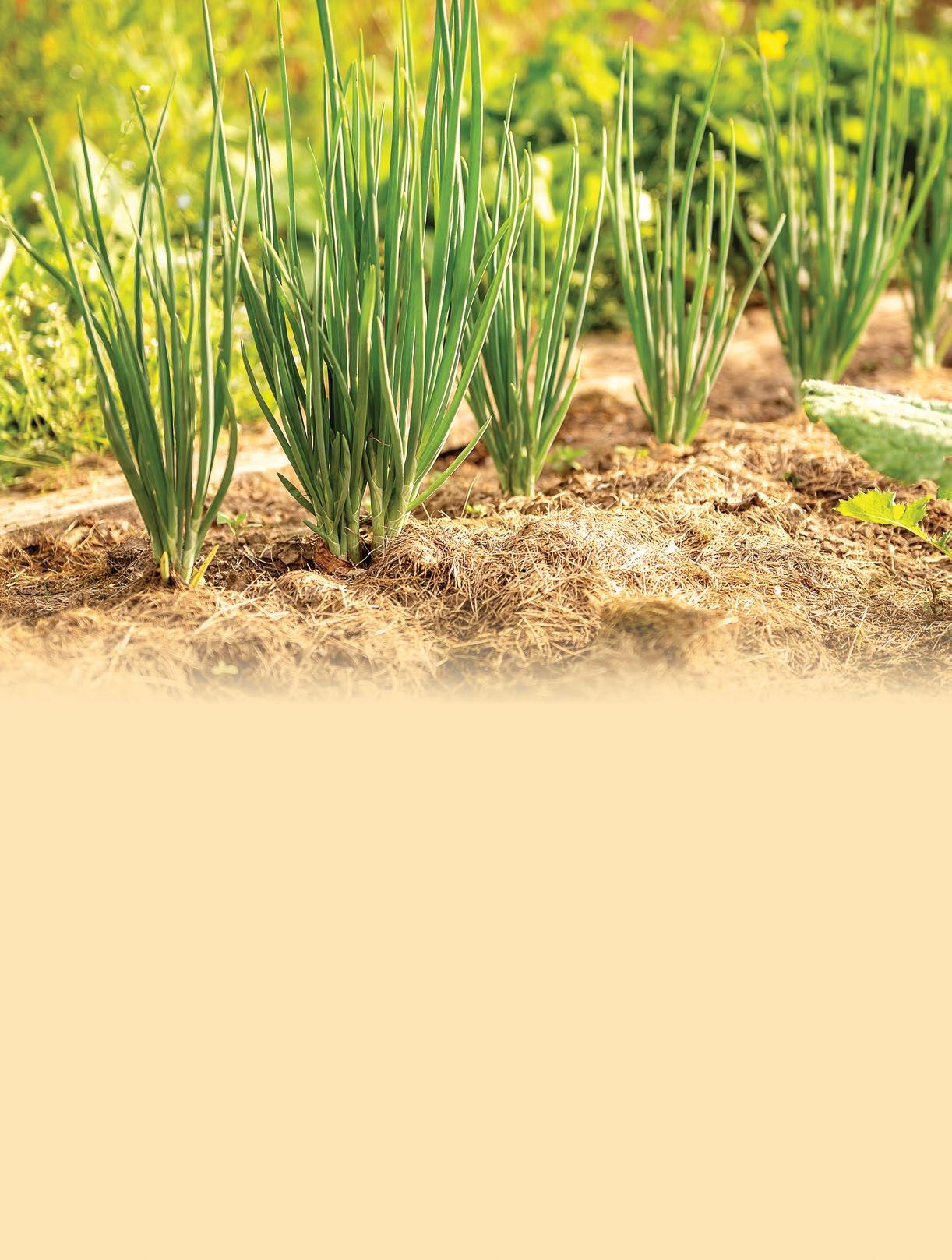
8 minute read
Gardening beside the sea: Lessons from an East Coast seedsman

Dan Rubin in his garden.

The backyard garden.
Advertisement
Story and photos by Dan Rubin
It’s a beautiful location, looking out on the Atlantic Ocean just north of Newfoundland's capital of St. John's. It's looking out onto Iceberg Alley!
When we moved to Newfoundland from the Gulf Islands of British Columbia almost 20 years ago, it was something of a shock for this long-time gardener. Coming from Canada’s banana belt, we were used to sheltered, warm weather on the east side of Vancouver Island, so arriving here in Newfoundland presented a series of lessons in weather, soil and growing conditions, after we purchased a waterfront home in a little town north of St. John’s.

The vegetable beds, reaching toward the sea.
Living here on this rocky island in the North Atlantic, the real factors are long winters and strong winds. The winters stretch out into April and May and we get blasted with winds that work their way up to 60 miles per hour and more. For us, this has become normal, but it also means there are tricks to garden- ing beside the sea at the edge of a wild northern ocean. The following bits of advice will apply across the country, but particularly to those of us living here in the Atlantic Provinces where seaside gardening is commonplace along our crenelated coastlines.
The real secrets for gardening here can be summed up in three words: sun, seed and soil.
While some may think that salt blown in from waves breaking on the shore has a negative impact, in actual fact that salt spray carries traces of micronutrients that have helped gardeners grow verdant, healthy vegetable crops for centuries.
Healthy soil is alive with micro-organisms, worms, arachnids, insects and fungi that give the soil its life. Living soil is aerated and enriched by all these living things. They break down nutrients derived from rotting vegetation and dead life forms, to create smaller, soluble (and therefore accessible) food for plants. The latest movement in gardening and food production is toward no-till, NOT digging, to make sure that this complex web of life is not disturbed and to keep weed seeds (waiting for the light) from germinating.
Let’s take a closer look at the foods plants need. The three primary nutrients, labelled on your bag of chemical fertilizer, are nitrogen, phosphorus and potassium (N, P, K). Each of these plays a key role in plant growth, supporting healthy roots, stems, leaves and fruit, to produce food for us humans. But what some do not realize is that there are a range of metallic elements that are also needed, in smaller amounts. These “micronutrients” included copper, magnesium, selenium, iron and manganese. So where do you find those? More than anywhere else, they come from the sea.
We have found it is best to not rely on chemical fertilizers, but to turn to the natural, organic amendments that are all around us and may also be free for the taking. In our gardens, maple leaves, compost, manure and seaweed provide these key inputs, and we layer them on top of our beds as mulch, where they rot down to feed and enrich the soil. Maple leaves in particular are a rich source for all the wonderful food that the roots of the maple trees have gathered through the warm weather. At the university botanical garden here in St. John’s they call maple leaves “black gold” which they harvest, shred and compost to create their famous dark, rich soil. And of course, we harvest seaweed from the shore. As the local livyers say, “You feed your garden, then your garden feeds you.” (“Livyer” is Newfoundland jargon for a person who belongs to a place.)
With well-endowed, rich organic soil in place, the next challenge is, what to grow? This is not a simple question, because we live in a cold northern climate with a short, intense growing season and changeable, uncertain weather. For us, it is essential to identify the right varieties, plants well adapted to local conditions.

Stargazer lilies.

Echinacea and a bumble bee.
When we discovered unique types of onions, kale and other crops well-suited to local conditions, we began to propagate and share our seeds, which led us to establish a regional seed company specializing in plants adapted to maritime conditions. After 15 years of operation, Perfectly Perennial Herbs and Seeds continues to specialize in local “land races,” true breeding perennials and self-seeding annuals well suited to our cold climate.
Where do you find seeds for the plants that do well by the sea? The answer is to turn to smaller regional seed houses that share that passion. In addition to the limited varieties we propagate ourselves, we turn to other local companies like Vesey’s on PEI, Hope Seeds and Annapolis Seeds in Nova Scotia, and a bit further afield, High Mowing Seeds, a remarkable Vermont company with a 20-year commitment to organic growing. You will find all of these online.
But even better, as a Canadian gardener, you should join Seeds of Diversity, Canada’s heritage seed network. Type in www.seeds.ca and you will find a list of almost 100 seed companies operating in Canada, including many small operations like our own. Even better, you should become a member, because that will give you access to an annual list of more than 4000 varieties propagated by fellow growers and gardeners across this country,
But the most important lesson of seaside gardening beside the wild Atlantic is that we needed to find or build shelter from wind and cold. Essentially, we have learned to create micro-environments that protect our plants and crops to allow them to reach their full potential.
Raised beds are one cheap, effective way to do this. We build ours out of untreated fir or spruce boards, 2-by-10s that we cut and assemble with 3-1/2-inch deck screws to create boxes 7 feet long and three feet wide. We find that if we build these any wider than 40 inches it is too hard to work in them. We fill these boxes with rich organic matter, starting with a triple mix from a local supplier made up of composted fish, plant waste, peat and soil. And there you are, ready to plant.
Over the years, we have learned to add a second box of the same size on top to create a wind barrier, and in winter and the shoulder seasons of spring and fall, we cover these upper boxes with lids made from recycled shower doors, or plastic stapled to a hinged frame constructed out of two-by-threes. This type of protection is simple and easy to build, with the additional money saving possibility of using recycled wood, glass and plastic to create growing space sheltered from wind and cold.
Here, on our small, municipal waterfront lot, we currently have 25 raised beds and have planted 27 fruit trees and bushes, each one carefully located in the wind shelter of a building or a tree or fencing. In this way, we can harvest a range of salad greens, squash, onions, garlic, cabbage and potatoes. But we also have had success with cherries, plums and apples and have moved on to peaches, grapes and kiwis. We have grown corn and artichokes and built a mini greenhouse over one raised bed that we call our “tomato

Dan has managed to grow artichokes.

A bean trellis, built and ready for beans.

The grape arbour is a verdant place to lounge away an afternoon.

The hothouse is mostly for tomatoes.

A garden with an ocean view.
A bean trellis, built and ready for beans. The grape arbour is a verdant place to lounge away an afternoon. house,” for those heat loving fruits.
If we have learned anything since becoming seaside gardeners on the East Coast of Canada, it is that gardening is a journey, a series of experiments, with lessons to learn and always something new to try. Season by season and year by year, as we continue to expand what we grow we have come to realize that, thanks to the available seaweed and maple leaves and great neighbours, there is no better place to be a gardener than right here, beside the sea!
Dan Rubin is an author, musician, educator and owner of Perfectly Perennial Herbs and Seeds.










